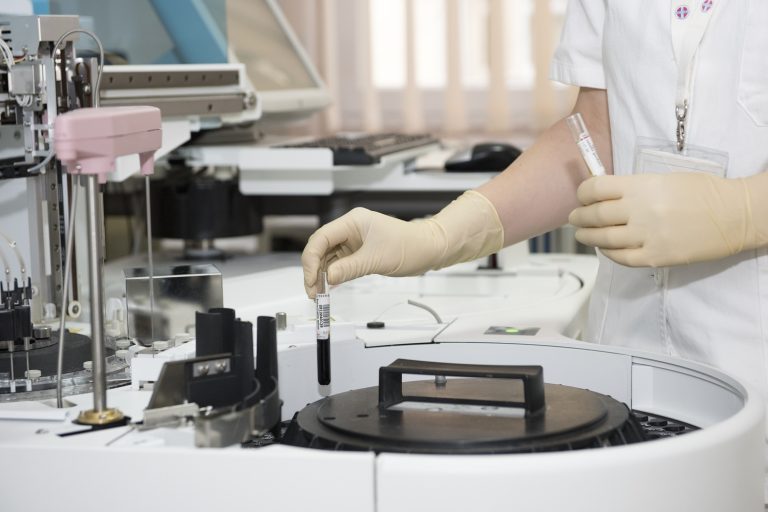The laboratory work that goes into the testing of blood, urine, tissue, and other specimens is critical for the timely diagnosis and treatment of millions of patients every day. Thousands of tests are prescribed in hematology, immunochemistry, and histology every hour in hospitals and laboratories around the world.

In the area of hematology, samples are typically subjected to a variety of conditions during testing and analysis. This includes light scatter analysis techniques for counting cells, mechanical motion and agitation, controlled temperature and humidity cycles, and the addition of reagents. Medical technologists use advanced laboratory and diagnostic equipment to conduct and catalog these tests and results.
Due to the high volume of tests and the requirements for reliability, these test systems are often highly automated, programmable, and have full data management and storage capabilities. In addition, they can handle up to 100’s of samples; often times open vials, and conduct multiple tests during an automated cycle. These systems have demanding positioning requirements and utilize a variety of different types of bearings including linear, angular contact, thin section, and miniature and instrument ball bearings.
Bearings for these applications should be manufactured from the type of martensitic stainless steels described previously. The bearings are often exposed to high humidity or moisture resulting from condensation. In addition, they are exposed to fluids during testing that include blood and the reagents used for the test, so good fatigue life is critical.
Sealed bearings should be considered whenever the potential for contamination exists. The most common bearing seal material is a nitrile rubber. However, this may not be well suited, or permitted due to regulatory requirements. Teflon seals are often used in medical devices. They have outstanding chemical resistance, high and low temperature capability, and exhibit less torque than nitrile rubber seals. Viton is also available when a more robust seal is required. The seals found on most types of bearings are not designed for immersion and fluid penetration will eventually take place. They offer excellent protection from particulate contaminants or a fluid splash and wipe down situation.
These systems move test samples, most often vials, to various locations within the machine for scanning, testing, or the addition of a reagent prior to analysis. In addition, samples may be spun, shaken, or otherwise agitated for various reasons. These movements and motions are then repeated over thousands of cycles. To achieve the precise positioning and repeatability requirements, in most cases, bearings should be ABEC 3 or better. Housing and shaft design should allow for very precise fitting to minimize any eccentricities or the chance for slippage or fretting. When fitting bearings that have thin cross sections, such as miniature bearings, line-to-line fits are commonly specified. Interference fits can reduce the internal clearance in the bearings. If this reduction is excessive, bearing life will be compromised.
In these applications, where positional accuracy must be controlled to precise levels, the radial (and axial) play in the bearing is usually unacceptable. Application of a preload is recommended. The principle benefits are precise shaft positioning (no free motion), control of axial and radial compliance, and shared loading between bearings. In addition, shaft rotational accuracy is greatly improved minimizing runout characteristics.
Pharmaceutical, dental, and medical device applications present many challenges for bearings. These include high speeds, low noise, long service life, and resistance to harsh environments or aggressive chemicals or fluids. Bearing manufacturers conduct continuous research into materials for components such as retainers, special lubricants, and optimization of the bearing geometry to in order to meet the ever increasing demands of the industry. In addition to superb product quality, bearing suppliers must offer a flexible approach to problem solving.
To speak to an AST Bearings consultant or engineer about design considerations in laboratory/diagnostic equipment, or any other application, contact them here.

